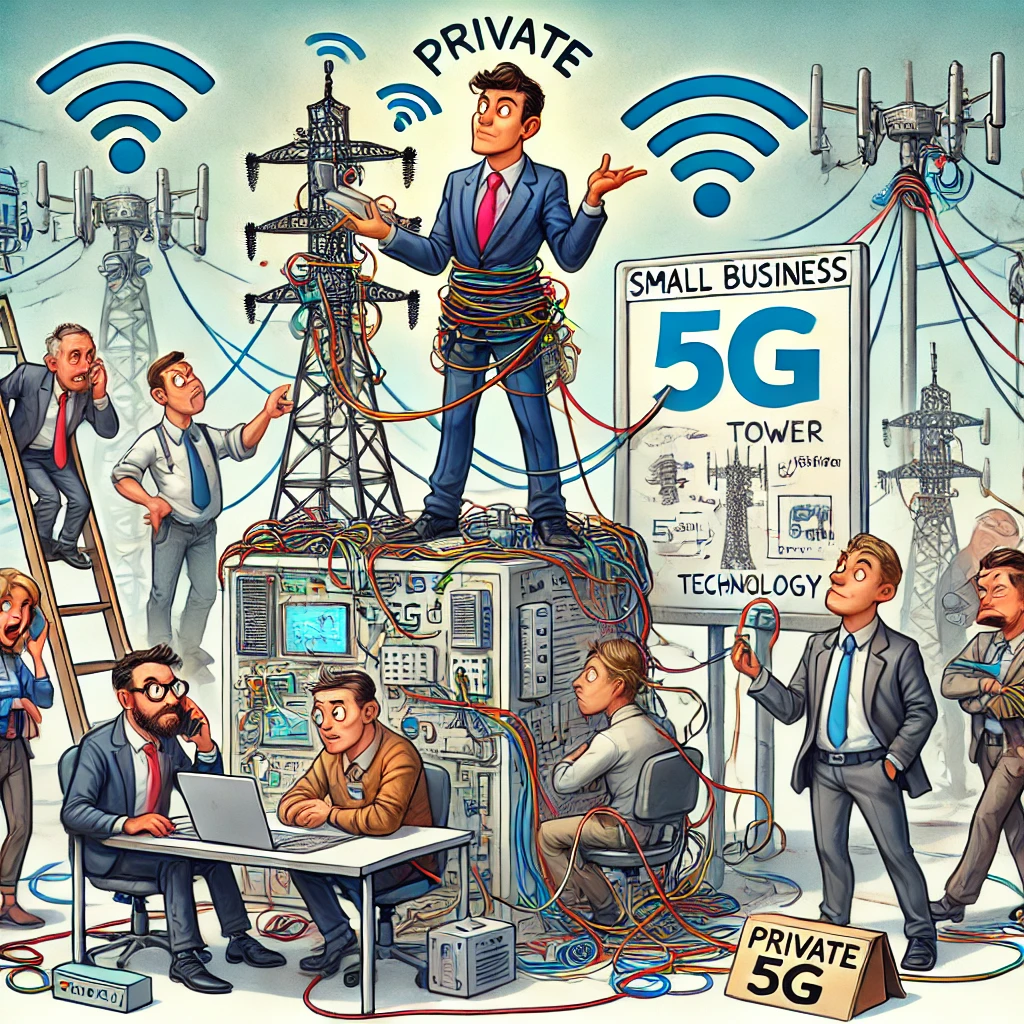
n the ever-evolving landscape of wireless connectivity, private 5G networks have emerged as a topic of interest, particularly for large enterprises and industrial giants.
But for mid-sized companies with 150 to 500 employees, the question remains: Is investing in private 5G a strategic move or an unnecessary extravagance? Let’s delve into this decision-making process.
Cost vs. Benefit Analysis
What Does Private 5G Offer That Wi-Fi 6 Doesn’t?
Private 5G networks provide enhanced coverage, reliability, and security compared to Wi-Fi 6. They operate on licensed spectrums, reducing interference and offering more stable connections, which is crucial for mission-critical applications. Additionally, private 5G supports higher device density and mobility, making it suitable for environments with numerous connected devices or extensive coverage areas.
That said, Wi-Fi 6 has made significant advancements in speed and capacity, and for many applications, it may still be sufficient for mid-sized businesses.
Are There Hidden Costs?
Implementing a private 5G network involves several costs beyond the initial setup. These include spectrum licensing fees, infrastructure investments, and ongoing management expenses. However, some regions offer shared or unlicensed spectrum options, which can mitigate licensing costs. It’s essential to conduct a thorough cost analysis to understand the financial implications fully.
Can Mid-Sized Businesses Lease Spectrum Instead of Managing Their Own?
Yes, mid-sized businesses can lease spectrum through initiatives like the Citizens Broadband Radio Service (CBRS) in the United States. CBRS allows organizations to access spectrum without the need to purchase expensive licenses, making private 5G more accessible. This approach can reduce the complexity and cost associated with spectrum management.
Security & Compliance Considerations
Does Private 5G Introduce New Risks or Mitigate Cybersecurity Threats?
Private 5G networks offer enhanced security features, such as SIM-based authentication and advanced encryption protocols, which can mitigate cybersecurity threats. By operating on a dedicated spectrum, these networks reduce the risk of interference and unauthorized access. However, like any technology, they are not immune to risks and require robust security measures to protect against potential vulnerabilities, and ongoing management and updates to maintain security.
How Does It Align with Industry Compliance Standards?
Private 5G can be configured to meet specific industry compliance standards, offering greater control over data transmission and storage. This is particularly beneficial for sectors with stringent regulatory requirements, such as healthcare and finance, where data privacy and security are paramount.
IoT & Edge Computing Growth
Is 5G’s Low Latency Significant Enough to Justify the Cost?
For applications involving IoT and edge computing, 5G’s low latency is a significant advantage. It enables real-time data processing and decision-making, which is critical for applications like autonomous vehicles, industrial automation, and remote healthcare services. If a mid-sized company relies heavily on such technologies, the investment in private 5G could be justified.
Who Should Consider Private 5G?
Industries such as manufacturing, logistics, healthcare, and energy, which require reliable, secure, and low-latency connectivity, should consider private 5G. For example, a manufacturing company utilizing automated guided vehicles (AGVs) for material handling would benefit from the seamless connectivity provided by private 5G.
Wi-Fi 6 vs. Private 5G: A Side-by-Side Comparison
- Speed: Both technologies offer high speeds, but 5G provides lower latency, which is crucial for real-time applications.
- Security: Private 5G offers enhanced security through dedicated spectrums and advanced encryption, while Wi-Fi 6 has improved security features but operates on unlicensed spectrums.
- Cost: Wi-Fi 6 is generally more cost-effective to deploy and maintain, making it suitable for smaller-scale operations.
- Reliability: Private 5G offers more reliable connectivity, especially in environments with high device density or mobility.
- Maintenance: Wi-Fi 6 networks are easier to manage, whereas private 5G requires specialized expertise for maintenance.
ROI Considerations: Hidden Costs vs. Long-Term Benefits
While the initial investment in private 5G can be substantial, the long-term benefits, such as improved operational efficiency, enhanced security, and support for advanced applications, may outweigh the costs. It’s essential to assess the total cost of ownership and potential return on investment based on specific business needs.
Alternatives: Are Hybrid Approaches Viable?
A hybrid approach that combines Wi-Fi 6 and private 5G can offer the best of both worlds. To effectively integrate them, businesses should start by assessing their specific connectivity needs and identifying which applications require the unique advantages of each technology. For instance, Wi-Fi 6 can be utilized for routine office tasks, such as email and web browsing, where high speed and capacity are sufficient. In contrast, private 5G can be deployed for mission-critical applications that demand low latency and high reliability, such as real-time data analytics in manufacturing or remote monitoring in healthcare. By strategically segmenting their network usage, companies can optimize performance while managing costs.
Additionally, businesses can leverage a unified management platform to oversee both networks, ensuring seamless connectivity and data flow between them. This approach not only enhances operational efficiency but also simplifies troubleshooting and maintenance. Regularly reviewing network performance metrics will allow organizations to adjust their hybrid strategy as needed, ensuring they remain agile in response to evolving technological demands and business objectives. By embracing a hybrid model, mid-sized companies can harness the strengths of both Wi-Fi 6 and private 5G, ultimately driving innovation and improving overall productivity.
Key Takeaways
- Private 5G offers enhanced coverage, security, and support for high-density device environments, making it suitable for specific industries and applications.
- The implementation of private 5G involves significant costs, including spectrum licensing and infrastructure investments, which must be carefully evaluated.
- Industries with stringent security requirements or reliance on real-time data processing may find private 5G particularly beneficial.
- A hybrid approach combining Wi-Fi 6 and private 5G can provide a balanced solution, leveraging the strengths of both technologies.
